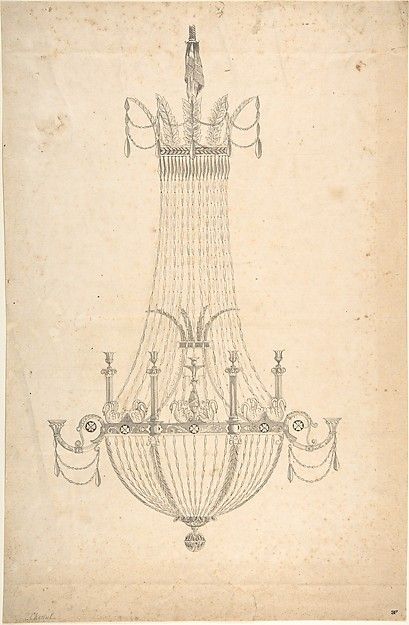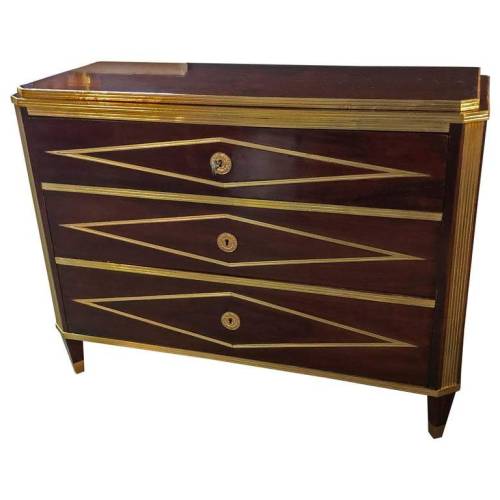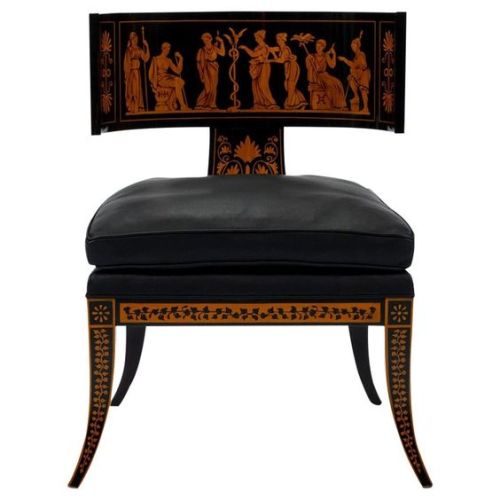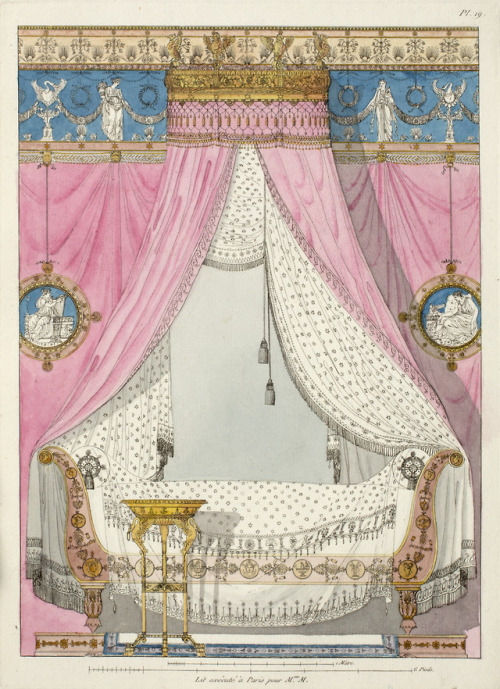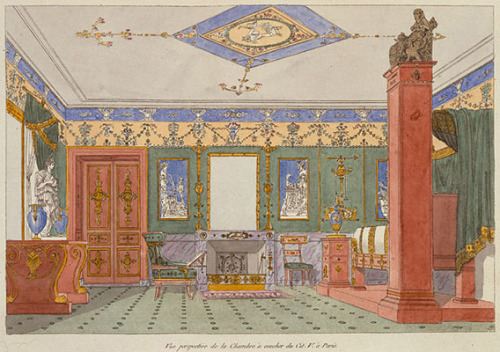#empire style
Bright Lights (Chandeliers)
1. Anton Seder, Chandelier design from “Antiquariat”
2. Anonymous, French, 18th century, “ Collection Rodrigues “, 18th century
3. Empire Style Chandelier by Pierre François Léonard Fontaine, 18th century
4. Anonymous, French, 19th century, Chandelier Design
5. Design for a chandelier, Jean Démosthène Dugourc, 1784
Post link
Russian Neo Classic Commode
A fine Russian neoclassic mahogany three-drawer commode with brass trim and mounts, with diamond-shaped inlays and a stepped top, raised on canted square tapered legs. early 19th century
Post link
21st century Italian Klismos chair in Empire (early 19th century) style
A large scale Italian neoclassical chair finely crafted in ebony and pau marfim veneers. Extraordinary details include a frieze of seven classical figures with floral and foliage detailing. Chair is upholstered in black leather with a loose down feather seat cushion.
Post link
Filipsborg reproduction 19th century wallpaper by Lim & Handtryck
This pattern is a reconstruction from a fragment found in a boudoir (a ladies’ daytime sitting room) in Filipsborg Manor in Kalix. Diamond patterns were common in late Empire style, which was influenced by the aesthetics of the gothic revival movement as well as by Empire style’s core neoclassical lines and motifs. When roller-printed wallpaper made its technological breakthrough in the 1850s, these aesthetic ideals were still relevant and diamond patterns were extremely popular.
Post link
Russian Neo Classic Bronze Gueridon
An unusual Russin Neo-Classic style bronze Gueridon with an ormolu pierced bronze gallery, a transparent cobalt glass circular table top, with a patented bronze scrolling legs centered by an ormolu bronze acanthus and acorn stretcher. 20th century.
Post link
Architect of Empires: Highlights from the Library of Pierre Fontaine opens tomorrow. We’re excited to announce a public program being held in conjunction with this exhibition, Percier & Fontaine: A Master Class in Architectural Prints and Drawings, which will take place at 6:00 on Thursday, February 8.
Join Iris Moon, assistant curator in the Department of European Sculpture and Decorative Arts at the Metropolitan Museum, for the illustrated talk “Building between the Leaves: The Post-Revolutionary Architectural Interior in the Books of Percier and Fontaine.” Following the talk meet in the Ryerson and Burnham Libraries to view and discuss the exhibition Architect of Empires: Highlights from the Library of Pierre Fontaine and to look at additional library materials with our speaker and the exhibition curator, Alyse Muller, research associate in the Department of European Painting and Sculpture at the Art Institute of Chicago. Then proceed to the Print Studio of the School of the Art Institute of Chicago for a demonstration of printing techniques by Shaurya Kumar, associate professor in the Department of Printmedia, to learn how the illustrations in the books of Percier and Fontaine were created.
Registration is required for the library and print studio portions of the event. To register, please email [email protected].
Here you see two plates from Percier and Fontaine’s Recueil de décorations intérieures… (Paris: Chez les Auteurs, 1812.), as well as an image of Louis Messidor Lebon Petitot’s painted plaster sculptures, Bust of Pierre François Leonard Fontaine (1839) and Bust of Charles Percier(1838).
Post link




